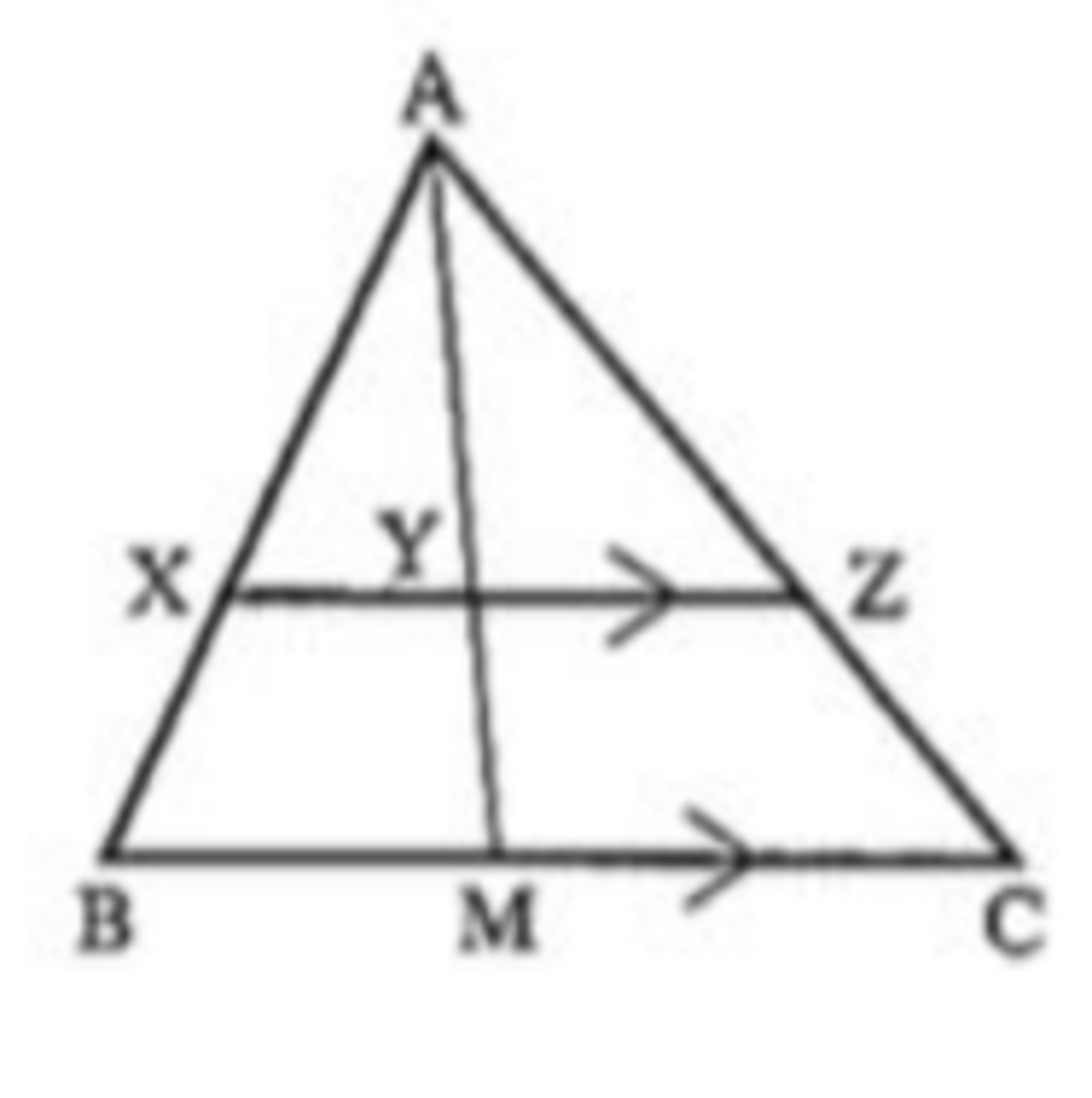Inspired by(copied from) IGSCE

Given that A Z = 3 cm , Z C = 2 cm , M C = 5 cm , B M = 3 cm and X Y Z ∣ ∣ B M C . If the ratio of the areas of the triangles, [ A Y Z ] [ A X Y ] is b a , where a and b are coprime positive integers, find a + b .
The answer is 8.
This section requires Javascript.
You are seeing this because something didn't load right. We suggest you, (a) try
refreshing the page, (b) enabling javascript if it is disabled on your browser and,
finally, (c)
loading the
non-javascript version of this page
. We're sorry about the hassle.
3 solutions
or you could use a r e a = 2 a b sin ( θ ) Nice sol(+1).
Log in to reply
I wanted the solution to be accessible to a wider lot, so didn't involve trig here. Thanks !
LOL, values of A Z and Z C are not required!
Since X Z ∣ ∣ B C , we have B M X Y = M C Y Z = A M A Y ⟹ Y Z X Y = M C B M = 5 3 ⟹ [ A Y Z ] [ A X Y ] = 5 3 .
Moderator note:
Why is the condition " B M X Y = M C Y Z = A M A Y " necessary? Can't we immediately do X Y ∥ B C ⇒ 5 3 = M C B M = Y Z X Y = [ A Y Z ] [ A X Y ] ?
X Y Z ∣ ∣ B M C ∴ Δ A X Y Δ A B M , Δ A Y Z Δ A M C . ∴ Y Z X Y = M C B M = 5 3 = ratio of bases of Δ s A X Y a n d A X Z . Since the heights of these triangles is same, their areas are in proportion of there bases. T h a t i s 5 3 . ⟹ a + b = 8 .
How did you assume XYZ ll BMC?
Log in to reply
You are right. From the sketch we took ||. But it should have been specified.
Thale's theorem in Δ A M C : M C Y Z = A C A Z = 5 3 ⇒ Y Z = 5 × 5 3 = 3 c m .
Thale's theorem in Δ A B M : B M X Y = A B A X = 5 3 ⇒ X Y = 3 × 5 3 = 5 9 c m .
Now, a r ( A Y Z ) a r ( A X Y ) = Y Z X Y [Since they have common altitude] = 5 3 .